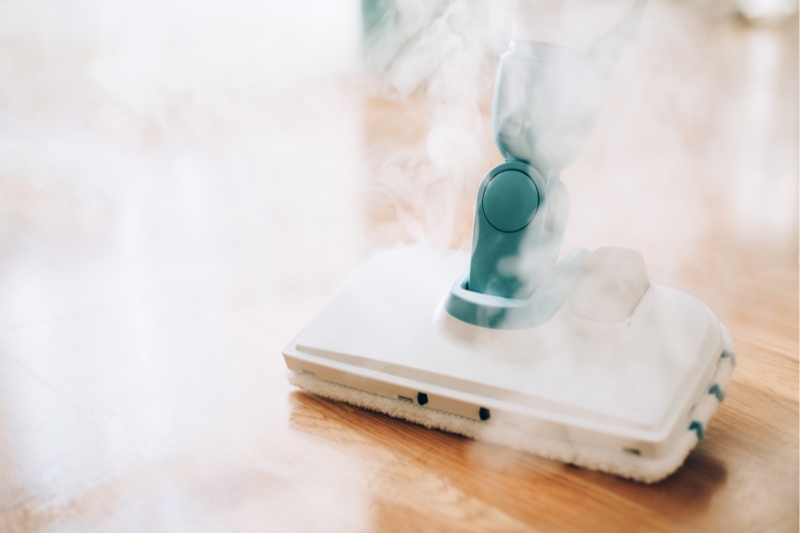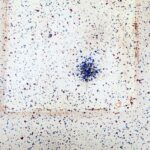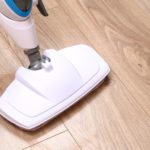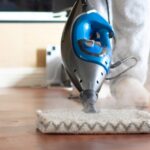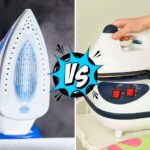Steam cleaning has gained immense popularity as an eco-friendly and efficient cleaning method. Rather than relying on harsh chemicals, it utilises high-temperature steam to tackle dirt and grime.
But while it’s evident that steam is a powerful tool for cleaning, the question remains: Where does the dirt go when you steam clean?
Understanding the answer to this question not only sheds light on the effectiveness of steam cleaning but also helps us appreciate how this innovative method addresses our hygiene concerns and leaves surfaces impeccably clean.
This article reveals precisely where dirt and grime go after cleaning, focusing on two steam-cleaning devices: extraction steamers and steam mops.
We explore the mechanisms that power these machines, plus several tips on getting the most from these handy household tools.
Where Does Dirt Go When Steam Cleaning?
When steam cleaning a surface, dirt and grime are loosened and dissolved by the high-temperature steam.
But, where does the dirt go when you steam clean? It doesn’t vanish into thin air—it is typically extracted or wiped away in several ways, depending on your steam-cleaning device.
Extraction steam cleaners
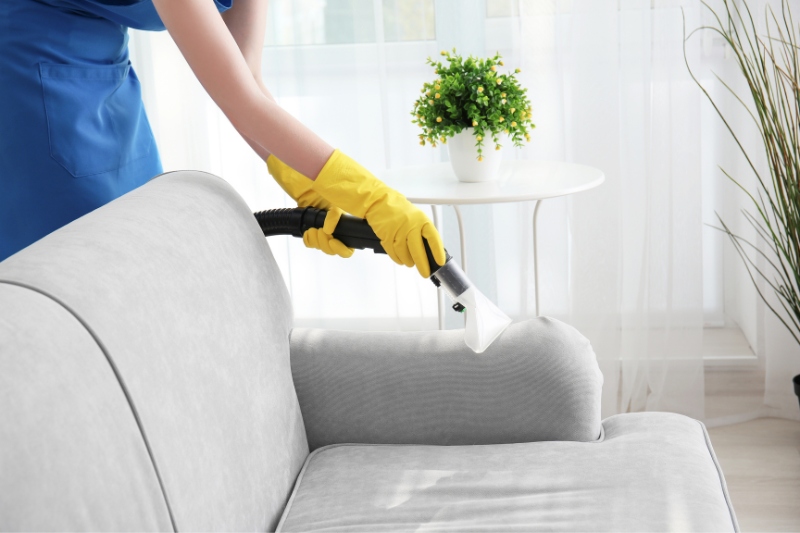
Extraction steam cleaners – also known as steam vacuums or steam extractors – have a vacuum or extraction component that helps in pulling up the dirt, moisture, and loosened particles from the surface.
Extraction steam cleaners are commonly used for cleaning sofas, carpets, upholstery, floors, and other surfaces in both residential and commercial settings.
The steam is usually applied under pressure, and then the vacuum component of the machine extracts the dissolved dirt and water like so:
- Steam generation & application: Water is poured into a reservoir in the steam cleaner. The steam cleaner heats this water to between 100°C and 150°C, producing high-pressure steam. The high-pressure steam is emitted through a nozzle onto the surface you’re cleaning.
- Loosening and breaking down dirt: The steam softens and dissolves the dirt, grease, and other substances present on the surface being cleaned. Some steam cleaners may also have scrubbing heads that mechanically agitate the surface, helping to loosen dirt further.
- Extraction or vacuuming: The extraction steam cleaner has a vacuum that simultaneously suctions up the loosened dirt, grime, and excess moisture from the surface. The extracted dirt and moisture are typically collected in a separate reservoir or tank within the steam cleaner.
- Disposal of dirt: Once the cleaning task is complete, the collected dirt and water are disposed of or emptied from the reservoir tank. The best place for disposal is usually down the sink or toilet, but check with local regulations first (more disposal tips can be found below).
Steam mops
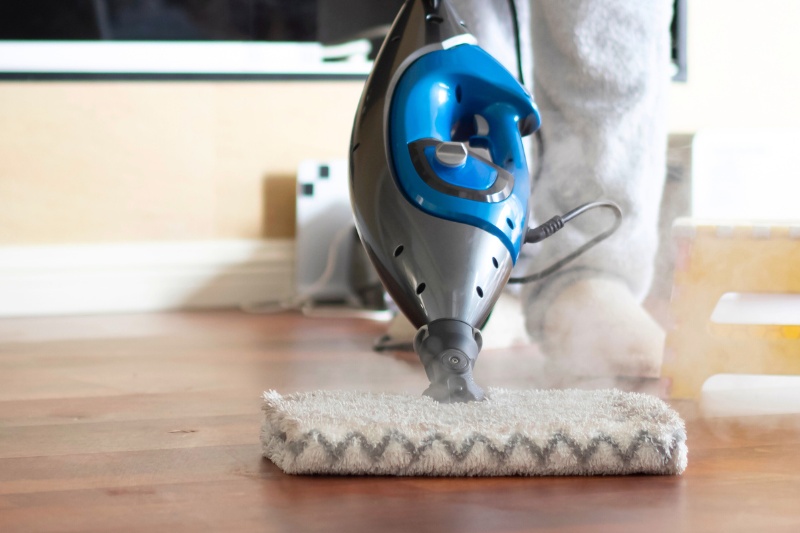
Steam mops have an absorbent mop pad that collects dirt after cleaning rather than extractors that suck up dirt.
For this reason, steam mops are only really suitable on surfaces that can be wiped, such as countertops or tiles.
The mop pad absorbs the dirt loosened by the steam as it simultaneously releases steam.
Here’s a more detailed look into how steam mops collect dirt:
- Steam generation: Water is poured into a reservoir in the steam mop and left to heat up. – The steam mop heats the water to high temperatures (usually above 100°C) so that it can effectively produce steam.
- Steam application: The high-pressure steam is released through the mop head onto the surface being cleaned. The heat and moisture from the steam help to break down the bonds between the dirt and the surface, making it easier to remove.
- Mop pads and mechanical action: Steam mops have pads attached to the mop head. These mop pads often have a textured or microfibre cloth surface that mechanically agitates the surface, allowing the loosened dirt and grime to adhere to the mop pad.
- Absorption and collection: As the steam mop pads pass over the surface, they absorb the loosened dirt and moisture. Depending on the steam mop model, you may either dispose of used mop pads or wash and reuse them.
Where Can You Empty a Steam Cleaner?
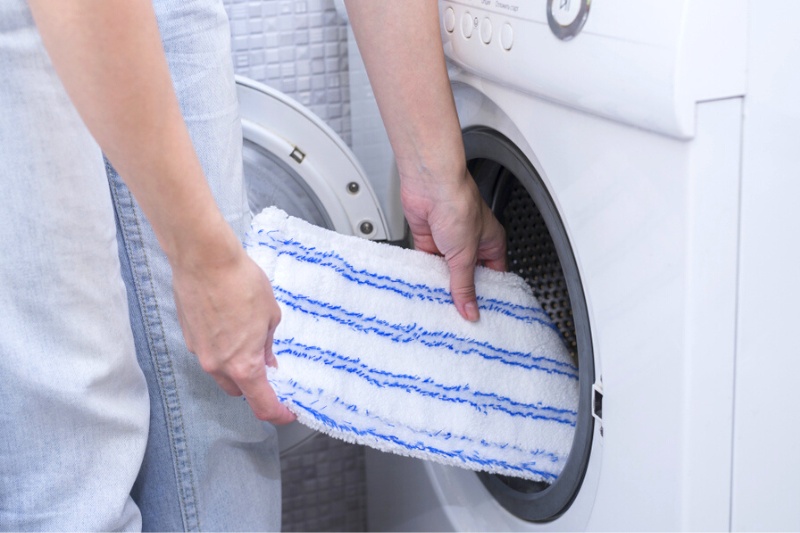
Steam mops don’t need emptying—simply remove the mop pads and either wash them or replace them with new ones.
However, extractor steam cleaners will need emptying. It’s vital to ensure proper disposal of the collected dirt in an environmentally friendly and hygienic manner.
In most cases, you can pour wastewater and dirt down a drainage system in your home (sink, toilet, bathtub, etc.).
However, if you’ve been cleaning carpets, fibres might have accumulated and can block the pipes—you might thus want to use an alternative disposal method.
Moreover, some sewerage systems cannot handle wastewater and require a different disposal route.
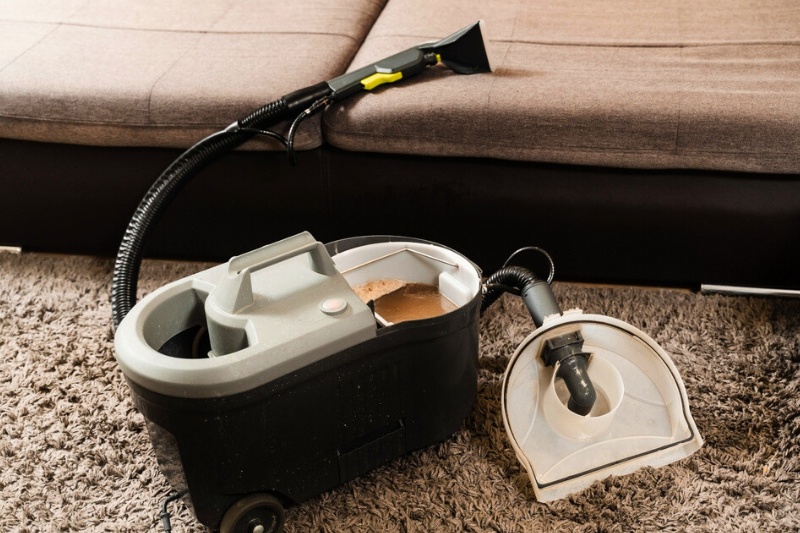
Here are steps and tips for disposing of dirt from a steam cleaner that cannot be flushed down your household drainage system:
- If the dirt collected in the reservoir is wet, allow it to dry to make disposal easier.
- Place the collected dirt in a suitable container or bag that can be sealed. Use a plastic bag or a disposable container with a lid for containment.
- If the dirt is non-hazardous and doesn’t contains any harmful chemicals, you can dispose of it in your regular household waste bin.
- If the dirt contains hazardous materials or chemicals, such as cleaning agents, follow appropriate procedures for disposing of hazardous waste. Contact your local waste management facility for guidance on hazardous waste disposal.
- If you’re dealing with a large amount of dirt or are unsure about the appropriate disposal method, consider consulting a waste disposal professional for proper handling.
Does Steam Cleaning Get Dirt Out?
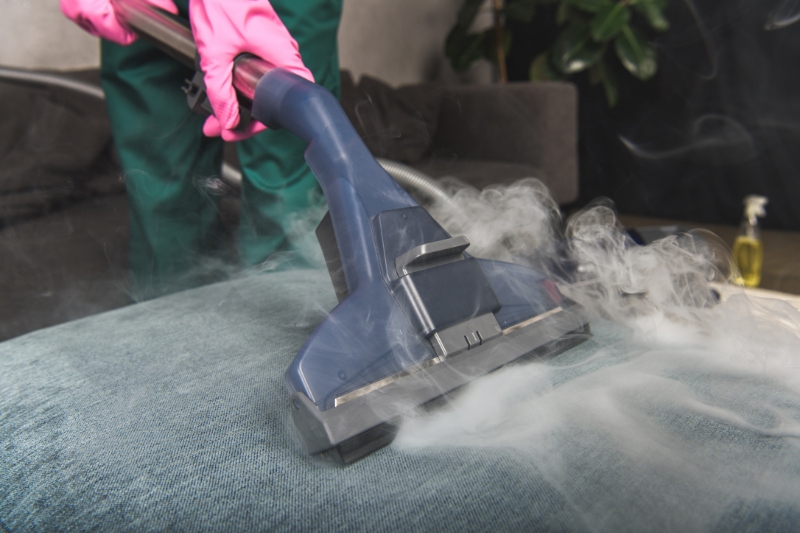
Steam cleaning kills many germs, viruses, and other microbes due to the high heat of the steam.
The intense heat denatures the proteins and disrupts the cell membranes of most pathogens, making it impossible for them to survive. In other words, it leaves your floor sanitary and hygienic.
But because of this, many people assume steam cleaning isn’t effective at shifting dirt. They think steaming is only good for sanitisation. And they have a point—large particles should be removed by vacuuming or sweeping before steam cleaning.
Steam mops are designed to clean like a regular mop and bucket, not pick up larger pieces of dirt.
However, steam cleaning does get dirt out and effectively removes contaminants from various surfaces.
Using high-temperature steam, steam cleaners loosen and dissolve dirt so that it can be wiped away or extracted. Here is a reminder of the ways steam cleaning helps with dirt removal:
- Heat and pressure: The high-temperature steam softens and loosens dirt, grease, and grime on the surface being cleaned. The pressure helps to dislodge the dirt from the surface, ready for collection or absorption.
- Moisture: The moisture from the steam helps to break down and dissolve stubborn dirt and hard-set stains, making them easier to either wipe off (with a mop pad or cloth) or vacuum away (with a steam extractor).
Why Is My Floor Still Dirty After I Steam Mop?

If your floor is still dirty after steam cleaning, there might be an issue with the steam mop or your cleaning technique. Here’s a run-down of the most common problems:
- Not enough heat: The steam mop may not generate steam at a high enough temperature or pressure to lift and remove stubborn dirt or stains effectively.
- Floor is too dirty: If the floor is heavily soiled, the steam mop might struggle to remove all the dirt in a single pass. Multiple passes or pre-cleaning may be needed.
- Cleaning pads are unsuitable or worn out: If using a steam mop, the cleaning pads might be worn out or unsuitable for the type of dirt or floor you have. This means they’re less effective in picking up dirt.
- Not vacuuming first: You should vacuum or sweep the surface before steam cleaning. Steam mops are designed to clean like regular mops, not pick up larger pieces of dirt, hair, and other debris.
- Pad is dirty: If using a steam mop, the pad may become saturated with dirt. It should be rinsed or replaced after the cleaning process to ensure effective dirt removal.
- Full resevoir: If using an extractor steam cleaner, the reservoir that collects dirt and water might be full. Empty down your drainage system or as per the instructions above.
- Hard water: If you have hard water in your area, the steam can leave behind mineral deposits, making the floor look dirty. Using distilled water or cleaning the mop regularly can help.
- Using on unsuitable surfaces: Not all surfaces are suitable for steam cleaning. Some materials are damaged by steam, such as laminate flooring, or grout lines may trap dirt that’s difficult to remove with steam alone.
How to Improve Results with a Steam Cleaner

To improve the cleaning results:
- Ensure you’re using the steam mop on surfaces appropriate for steam cleaning.
- Check and follow the manufacturer’s guidelines for your specific steam mop model.
- Use distilled water to prevent mineral buildup if you live in an area with hard water.
- Experiment with multiple passes and different cleaning pads to improve results.
- Allow the floor to dry completely after steam cleaning to evaluate the cleanliness accurately.
If the problem persists, you may want to consider consulting the manufacturer, seeking professional cleaning help, or exploring alternative floor cleaning mops and tools.

Hannah has a passion for cleaning. She worked her way around Australia by cleaning hostels in exchange for free accommodation and used her cleaning skills to bag a job as a chalet host for a luxury ski company in France.
